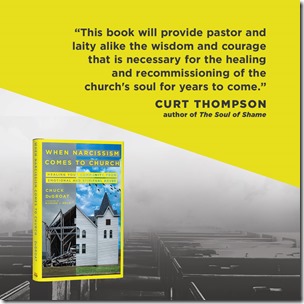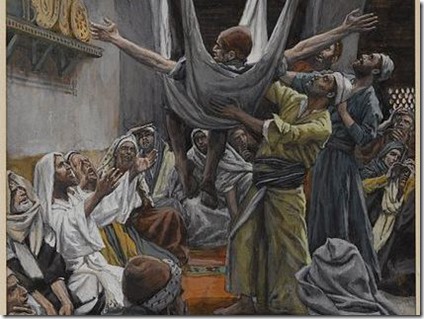 One of the most helpful books I’ve read in the past 5 years is When Narcissism Comes to the Church by Chuck DeGroat. Much of the emotional and spiritual abuse that happens comes from the hands of those who have a narcissistic personality.
One of the most helpful books I’ve read in the past 5 years is When Narcissism Comes to the Church by Chuck DeGroat. Much of the emotional and spiritual abuse that happens comes from the hands of those who have a narcissistic personality.
Over the next couple days I want to share a few insights from this book and also think through how it relates to verses such as Matthew 18:15-20. I think in order to help our communities thrive, to speak for the vulnerable, and to love like Jesus we need to be knowledgeable of the Bible as well as being trauma-informed.
Today, I will share 10 characteristics, the cycle of narcissistic abuse, and try to give a bit of a picture of what interacting with a narcissist might look like.
The Characteristics of a Narcissist
DeGroat, with the help of Craig and Carolyn Williford, identify ten characteristics of the narcissist:
- All decision-making centers on them
- Impatience or a lack of ability to listen to others
- Delegating without giving proper authority or with too many limits
- Feelings of entitlement
- Feeling threatened or intimidated by other talented staff
- Needing to be the best and brightest in the room
- Inconsistency and impulsiveness
- Praising and withdrawing
- Intimidation of others
- Fauxnerability (a calculated vulnerability)*
Is there someone in your life who this seems to fit to a tee? If so you might be dealing with someone who has a narcissistic personality. I would also suggest reading through this insightful article outlining a few more warning signs. It is also important that we understand narcissistic abuse.
The Cycle of Narcissistic Abuse
Abuse tends to follow cycles. You’ve likely seen the cycle of violent abuse: Tensions build, incident, reconciliation, calm—in an endless cycle. In one phase the abuser is making promises, sending flowers, bringing presents, and being a knight in shining armor in order to gain or regain control. Once that control is gained the relationship moves into a stage where the abuser begins to isolate the victim, demeans them, intimidates them, and begins to withdraw affection. When the victim is successfully “broken down” an abusive incident occurs. When the victim fights back, leaves, or placates the cycle tends to restart.
When you first meet a narcissist they will make you feel as if you are the most wonderful person to have ever lived. This phase is called idealization. You are given a ton of attention and the narcissistic abuser will be working to create a sense of ownership of you. Boundaries will be crossed but in the name of love and care for you. Early attempts at isolation will be made.
But nobody can stay on a pedestal forever. Eventually you fall off and at this stage the narcissist begins to devalue you. This is where put downs, threats, triangulation, and even more isolation begin to happen. If a narcissist is called out on any of this they will turn the script and play the role of a victim. (See DARVO).
This is where I’m a bit hesitant to call this a cycle. Narcissist will tend to reject and discard those who are no longer boosting their ego and giving them the attention that is needed. Narcissists tend to end the relationship and find another person/community to begin the abusive cycle all over. But they don’t go out without swinging. Here are a few behaviors common to the rejection phase:
- Feelings of contempt and rage
- Betraying the relationship
- Invalidating their partner’s emotions and placing all the blame on them
- Playing the victim
- Physical, emotional, and verbal abuse
- Ending the relationship permanently or temporarily with attempts to continue this cycle of abuse (Source)
What do you think happens when a narcissist comes to your church? What happens when that person becomes your pastor? We’ll try to paint a picture of this tomorrow.
—-
*It’s important that we consider the potential for narcissism in ourselves. Self-centeredness is part of the fall. It’s possible that you can see even a few of these things within yourself. (And the ability to see these may indicate that you aren’t actually a narcissist). We can also be very self-deceived. That’s why a healthy practice would be to give this list to others and ask them how they experience you. Give them permission to be absolutely honest with you.


